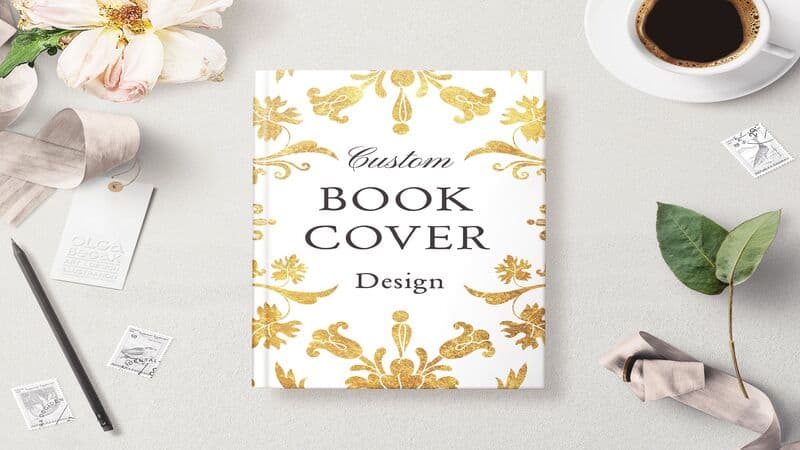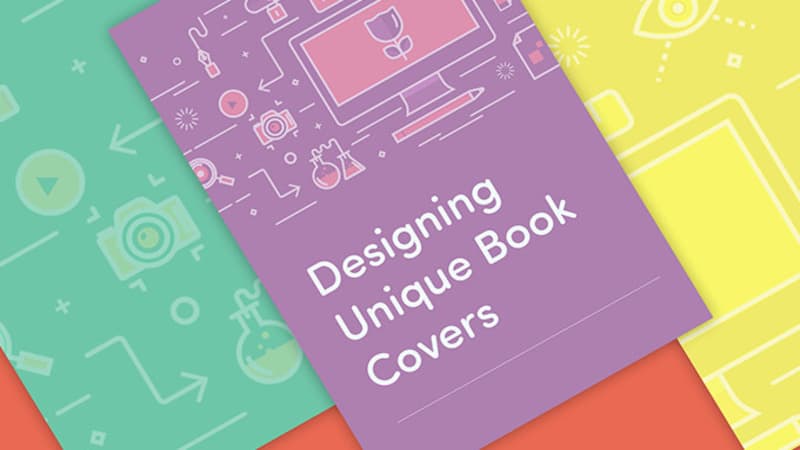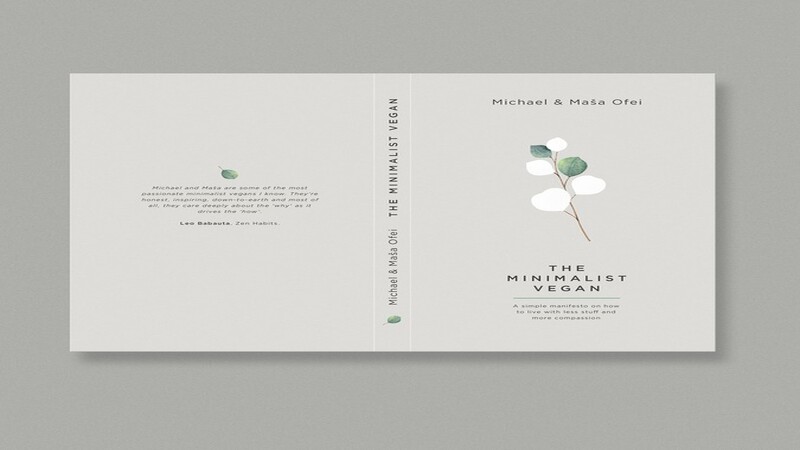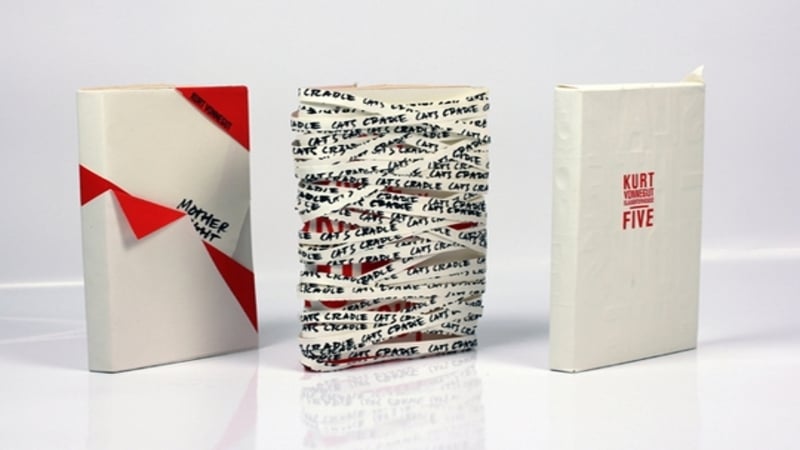Last Updated on April 14, 2023 by Packoi Team
After working hard to write your book, it deserves to be read and appreciated by your target market. But before that can happen, you have to make them take an interest in your book.
Unless you’ve already written a best-selling book before, the chances of a random person picking up your book are slim.
But that can change if you have the right book cover design.
In this article, you’ll learn more about creating a book cover that sells. The goal is to make people interested enough to read the summary on the back cover of the book so they can buy it.
Why Are Book Covers Important?

A book’s cover is meant to protect the inner pages. But from a marketing perspective, the book cover design can help authors sell books.
Whether you’re selling a self-published book or not, you have to consider the important role of the cover in attracting your target audience.
Admittedly, it’s the summary or synopsis of a book that’ll make potential readers want to buy it. But the thing is, you have to make them read the summary. Make your book call out to people passing by so they can stop and pick up your book.
That’s the only way your book can have the chance to make a pitch.
How can you make that happen when your book is on a shelf or display table?
This is where the book cover comes in.
It has to be appealing enough to ignite people’s curiosity so they’ll decide to know more about your book.
Does this mean you need a professional book cover designer?
While having expert help with the design of your book, they’re not always necessary. As long as you know your book by heart and you understand the elements of design, you can create an awesome cover for your self-published book.
12 Ideas to Find the Best Book Cover Design

Two things could happen if you decide to create your book cover design.
The first is you treat it like an afterthought. You think that you’ve already done the hard part. You’ve written your book. Everything from hereon would be a breeze.
Writing a book’s content is the most important part of the whole process. But that doesn’t mean you should treat everything else as an afterthought – especially book covers. You have to remember the cover is the first interaction that your book will have with potential readers. You need a good book cover design to make them interested.
The second is you overthink it. You know the importance of a beautiful cover. You understand its role in helping you attract the right readers. So you try to cram everything that you think should be there.
Well, sometimes, overthinking would make you choose the wrong design for your cover. It’ll make the cover look overcrowded or too overbearing. Instead of attracting your viewer’s attention, you might end up repelling them.
So what are you supposed to do?
You have to find the balance. Here are 12 ideas you can use to help you find the perfect book cover design.
Honor the Content
To come up with a good book cover, you have to start with the content. While a book cover design aims to be visually attractive, you want to give it something more.
It has to resonate with the type of readers that you’re targeting. So science fiction books should have a hint of the genre in the cover design. Maybe a clash of dark and neon colors with an air of mystery in the combination. Children’s books should be colorful and filled with illustrations.
Whatever the content is, your book cover should reflect what’s inside. Give people a glimpse of what they’ll experience as they read the book from cover to cover.

Stay True to the Main Theme and Message
If you’re overthinking and confused about what to choose for your book cover, it might help if you just stick to the book’s main message.
So going back to the science fiction example. If the book is about aliens, hint at that theme on the cover. Or if it’s about space exploration or an apocalyptic world – focus on the main theme and message and create something from there.
The theme or message of your book can also be an emotion. Maybe it’s a story of hope. Survival. Love.
Whatever it is, identify the one concept that you can focus on. This will help you narrow the design options. It’ll be easier to choose which option will represent the contents of your book well.
Simplicity May Be the Best
Never underestimate the power of simplicity. Sometimes, having a book cover design that revolves around the title is enough.
There’s no need to spend hours thinking about clever designs. While putting a hidden meaning on the cover seems like a good idea, people browsing bookstores won’t have time to decipher them.
Even if you’re designing a book cover for kids, you don’t have to exaggerate everything. An overload of details might turn off readers. Sometimes, people just want to read so they can relax. Putting too many details on the cover won’t feel like it’ll help anyone relax. It might look tiresome.
If it applies to the content of your book, use minimalistic principles in your design. Just surprise them when they open the book and start reading the contents.
Give the Design Some Direction
It’s easy to get carried away when you’re trying to create book covers. You add one thing and then think about another thing you can add. You see something new and think it’s a great element to add to your design.
The result? You’re always second-guessing the elements that you’ve put there.
While it’s okay to revise and re-do your book cover if you’re not happy with it, there are moments when it’s a complete waste of time.
You may be indecisive because your design doesn’t have any direction. So before you start, think about the direction you want your design to have.
Ask yourself: when someone sees my book, what impression or feeling do I want them to have?
The answer to that question can shape your book cover design. Have a clear idea of what you want your target readers to feel and stick to that. Any design element that doesn’t adhere to that shouldn’t be considered.
Be Cautious of Using Photos

The use of photos on a book cover is common. But the question is, what photo should you use?
This would depend on the genre that you’re writing. If it’s an autobiography, then it makes sense to use a photo of the person you’re writing about.
If you’re writing a self-help book that mostly includes information about your experience, putting your photo, there would be a good choice.
Well, that depends on certain circumstances. Like, if this is your first book, people probably don’t know anything about you. Why would they pick up a book with your photo on the cover?
It may be better to use a design that hints at the content.
The only time it’s okay to use a photo of a person is if they are well-known. Of course, the book has to be about them. Otherwise, you might get into trouble with copyright issues and the like.
Create a Design That Fits Different Platforms
If you’re self-publishing your book, make sure your design is applicable online and offline.
Your book should stand out when it’s displayed with different books, whether on a shelf or table. Online, the book cover design should be recognizable even as a thumbnail. It shouldn’t lose any of its details when you scale it to a smaller size.
This is one of the reasons why you should consider simplicity in your design. When there aren’t too many elements in the book cover, it’s easier to scale it down without compromising the beauty of the design.
You can sell your book on different platforms and they’ll all look the same. You’ll get an equal chance of selling more books from every channel.
Hint the Story – But Don’t Reveal the Plot
One of the key elements of your book cover design is the book’s content. But you have to be careful with this.
While the book’s content will give you direction in terms of the design, you shouldn’t reveal too much about the plot or contents.
Just give a hint of what the reader should expect from the book. Find a distinct idea from the content that symbolizes the story, but don’t ruin the surprise.
It’s best if the book cover focuses on the title. After all, the title of the book is usually a reflection of the contents. Using it as inspiration can help you find a good book cover.
Take Book Publishing into Consideration
There are two ways to publish your books. One is online, and the other is offline.
You must learn the platforms used to publish and distribute your books online. The design may look skewed when your book is shown on different platforms. Think about the book cover size so you can adjust the design and image resolution accordingly.
In case most of your books will be printed, you have to consider a different publishing process in your design. So if you’re self-publishing your books, learn about the different publishing techniques you can use.
This knowledge will be useful, especially when discussing printing options with a printer. You’ll know what questions to ask, and you can determine the best way to publish your book so you can get more sales.

Make Readers Curious
You have 2 chances to make your readers curious about your book.
The first is the title. The title should resonate with your ideal readers. When they read it, the title should stimulate their mind. It should give readers a clue as to what they can learn from the contents.
The second way to make readers curious is through the book cover. If the title stimulates the mind, the book covers work on the senses. It’s not just about being eye-catching. It’s important to choose a design that’s both interesting and entertaining. That means going beyond the visual artistry or design elements.
A good book cover targets the emotions of the reader. Through your cover, a reader should be able to feel a pull toward your book. Choose the right design to get people to come closer and open your book, whether it’s a feeling of curiosity, excitement, or intrigue.
Think about Color Psychology
Creating a book cover design that evokes the right emotions isn’t as complicated as you think. You just have to understand the psychology of color to make it happen.
Choosing a color scheme is part of the design process for your book cover. The question is, what colors should your cover have?
Again, you’ll have to go back to the contents of the book. You should also consider the genre. The colors you choose should coincide with that.
If you want an air of mystery around your book, go for dark colors like black, gray, and deep blue shades. Opt for pink, purple, blue, and red if your book is about romance. If you prefer to make your readers feel relaxed while looking at your book cover, opt for earth colors in blue and green hues.
Choose the Right Typography
Did you know that typography can also evoke feelings? Choosing the right typeface allows you to set the tone for the rest of your book cover.
Using sans serif fonts like Helvetica and Futura will give your book a sense of thrill and mystery around it. On the other hand, the simplicity and elegance of Garamond make it a great font for romance novels.
If you combine the right color and typography for your book cover, you’ll have a powerful mix in your design that can attract the right readers.
So think carefully about the font for the title, tagline, and author’s name. It’s okay to make them different – but you can also use the same font. The choice will depend on your vision for the book cover.
Get Opinions Online
You can do this early into the book cover design process – especially if you’re planning to be a self-published author.
Get ideas online.
You can even set up a design contest to see different ideas that you can incorporate into your book cover. Or you can research other books from the same genre.
What designs do best-selling books have?
You can search online to see how certain authors have changed their book covers over the years. Sometimes, they opt to change the design as they print new editions. Study how the designs have evolved and try to observe what caused these changes to happen.
You’ll get a lot of insight and understanding that’ll help you create a good book cover. You can mix and match different ideas until you arrive at a unique design for your book.

7-Step Process to Designing a Book Cover
A good book cover design doesn’t just happen. As mentioned, it shouldn’t be done as an afterthought. It has to go through a process – especially if you’re self-publishing your book.
You should consider specific things as you go through the design process. Every choice that you make will shape the first impression that your target readers will have of your book.
If you make a mistake, you’ll lose them. You’ll get lost amidst the hundreds and thousands of books published online and offline.
So if you want to sell more books and reach more people, don’t rush through the process. Consider every detail of your design so they come together seamlessly for your readers.
To help you, here’s a step-by-step process that’ll allow you to create the perfect cover for your book.
Step 1: Know the Parts of a Book Cover
Before you look at your content and everything else, start with the anatomy of a book cover. What parts of the cover do you need to put a design on?
A book cover usually has 3 parts.
The first is the front cover. This part contains the book’s title, a tagline, and the author’s name.
The second is the back cover. This can contain the summary or description of the book. It can also provide more in-depth information about the author. It can also include reviews about the book.
The third part is the spine. It’s the one that connects the two covers. The spine usually has the title and author’s name on it. This allows readers to identify the book even if it’s sandwiched between other books on a shelf.
You also have to consider the cover type you’ll choose for your book. Will it be a paperback or a hardback book? These will affect the elements that you can put in the design of your book cover. It’ll identify what type of ink, printing style, or technique you can use (e.g., embossed, foil stamping, etc.)
Step 2: Research the Readers
After you’ve understood what needs to be put into the book cover, it’s time to consider who will see it. The readers of the book are critical to the design process.
By reader, that doesn’t mean everyone. It refers to the specific group of people that you wrote the book for. It’s the ones you know will benefit from the contents of your book.
For instance, imagine your ideal readers if you wrote a romance book. Are they young adults? Are they stay-at-home mothers taking a break from the kids? Who are they?
What do you think they want to see to recognize that your book is romance? Or a mystery thriller? Or science fiction?
You don’t need a professional designer as long as you know what your readers expect to see. You can come up with a design that’ll make them want to take a closer look at your book and see if they should buy it.
Step 3: Talk about the Overall Vision for the Book
After understanding your readers, it’s time to shift your focus to your vision for the book. The book cover should be aligned with your vision.
Like everything else, this vision is most likely inspired by the content of your book. It also reflects the type of feelings and experiences that you want your readers to go through as they read your book.
It helps to create a mood board to help you create a vision for the book cover design. Get photo inspirations from other books. Do your research and play with colors. See what fonts you can use that fit the book you want to publish.
In time, you’ll see your vision coming together.

Step 4: Find the Focal Point
As you look at your vision on the board, ask yourself: which of the elements will be the focal point of your book cover design?
The focal point is the first thing that your readers will look at, keeping them from looking at the next book. It’s the one thing that makes it unique.
For instance, if you notice the books of Suzanne Collins, you’ll notice that the focal point of her books is the animal emblems in striking colors of gold, red, or yellow-orange. It’s surrounded by dark colors and the text used is just flat block fonts.
Sidney Sheldon, another best-selling author, has a specific look across multiple books. He has his name and the title the same size and positioned prominently on the cover. It’s not surprising since his name is already well known. That means the focal point in his books is his name.
What does this tell you?
If you’re thinking about the focal point of your book cover, consider your vision and plans as well. You might want to decide on a unique element in your design that’ll link all your books and make people know that it’s yours, even if they don’t see your name.
Step 5: Finalize the Images and Font
At this point, you should be able to identify the specific images and fonts that you can use. These will set the vibe and feel of your book cover. So choose them well.
For some, this might feel like too much to do without expert help.
If you feel like you need book cover designers, it’s okay. Hire them to help you put your vision together. But keep an open mind.
Their book cover design may turn out to be better than what you expected. Or it may be far from what you want.
Regardless of the result, you get the final say in everything.
Step 6: Create a Mock-Up and Get Opinions
Before you send the design to the printers, create a mock-up of the book cover first. This will help you decide if your book cover design will look good from all angles.
You can decide whether to add a dust jacket or print it on a hardback or paperback cover.
The mock-up will help you see if missing elements should be added – or some that feel overwhelming and have to be removed.
You should also show the mock-up to other people. Get their opinions about it. This will help confirm if your book cover can get the intended reaction from readers.
Step 7: Understand What the Printer Will Need
Finally, when you do the book cover, you want to ensure you have everything the printer will need from you.
For instance, you have to ask them about the file that they’ll need to print the design for the book cover. Ask them if they have an in-house graphic designer who can check it out. If not, you’ll have to ensure every detail is correct before they print it.
That’s what happens when you’re self-publishing your book. You’re responsible for every detail. Make sure the colors are in CYMK. The size and measurements should also be correct.
Once everything is okay, then you can get your cover printed together with the rest of your book.
Do You Need a Book Cover Designer?
Having a professional book cover designer can make things easier for you. A graphic designer has the artistic eye and creativity to create the best book covers.
These cover designers will come with their expertise and experience. They’ve done a lot of book covers already.
The question is, will you be open to accepting their opinion and suggestions about your book cover design?
While you’ll still have the final say, you have to be open-minded when dealing with them. Be respectful enough of their opinion but stay true to your vision if that’s what you want to follow.
Discover the Perfect Solution for Your Business with Packoi
Creating your book cover design can be very exciting. Don’t let the artistic and technical process intimidate you.
If you follow the guidelines, you can create a cover design that’ll help you sell more books.
If you need a professional cover designer, Packoi Printing can help. We offer design and printing services to help you create the perfect book cover.
Give us a call so we can give you a fair quotation that includes our design services.




